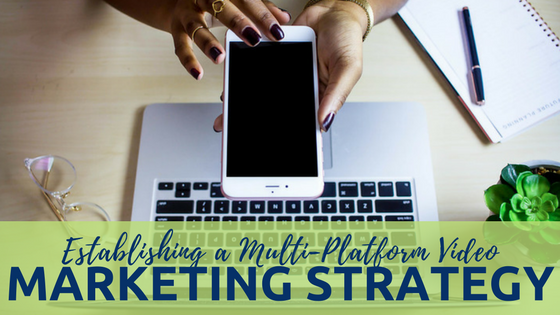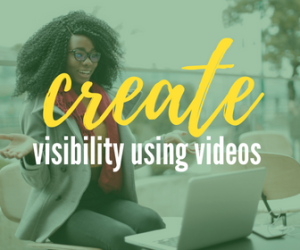A few years ago, I started hearing a buzz about having a multi-platform strategy when using videos on YouTube.
Up until this point, I assumed you just needed to create your videos on YouTube and simply shared them from that platform to all the others.
Makes sense right, after all, YouTube makes it so simple for you to do this from within their platform so that must be what we needed to do.
A few short years ago that’s what everyone did when they wanted to share their YouTube videos to other platforms. Unfortunately, that is no longer the case. Since all platforms prefer if you not send traffic away from them, they penalize you when you do. As a result, we content creators needed to come up with something that would work within the system and benefit us in the end.
So that’s where having a multi-platform strategy comes in.
What is a multi-platform video marketing strategy
Simply put a multi-platform video marketing strategy is a strategic plan created by you to market your YouTube video on other platforms where your audience is hanging out.
If you’re creating content for YouTube, why not make sure it can work on multi-platforms. After all, we do get that each platform has inherent limitations that we must abide by, anyway right?
We get that Twitter only allows for 280 characters and Instagram limits videos to one minute, so this is proof that we must create a strategy to deal with each platforms guideline for use.
The next thing that we must realize is that the content used on each platform needs to be tested to see what works and what doesn’t work.
Since each platform is different the requirements to achieve engagement must also be different.
So how do we do this?
First, you need to decide on the platforms you wish to use.
According to Gary Vaynerchuk you should try them all and never limit yourself to just 1 or 2.
Learn how each platform works and have a game plan as to why you are using it.
- YouTube – for long haul
- Facebook – instant gratification
- Instagram – popular creators, but behind the scenes videos seem to excel
Next, you need to create content that is suitable for each platform (behind the scenes, lifestreams, tips, tutorials)
Understand the limits of that platform, length, and format of the video (i.e. Instagram under 60 seconds, square or 1:1)
Plan for platforms that play videos without sound by burning your captions into your videos or using apps that do this for you like Apple Clips
Exhaust all available platforms for your content before moving on to your next piece of content.
This sounds daunting and without a team behind you, but with planning it’s not impossible.
- You need to know what you are going to do before you create your video and
- Craft your script and your video with distribution in mind
Your Video Marketing Multi-Platform Approach
How can you use your content on multiple platforms?
Let’s use a live event as an example, this could be a live stream, online live event or a recorded in-person live event

YOUTUBE
Once you’ve created your videos as long as they are for public consumption, you should, and I say must upload them to YouTube. This is because for obvious reasons YouTube is the second largest search engine and it’s owned by the first, Google! You can drive traffic to this video by using it on the following platforms which will benefit your channel views, watch time and retention.
BLOGS
After you’ve uploaded your video, you can take the embed code and add it to your blog or a guest blog where it can get even more eyes and engagement.
Don’t forget to either use the video in its entirety or a clip from your video and share it with your email list. Adding videos to your emails is often a forgotten task that can lead to increased open and click-through rates.
Using the word ‘video’ in an email subject line boosts the open rates by 19%. (Syndcast)
SOCIAL MEDIA
This is where you can get very targeted and specific. Take one or two clips from your video that you know will resonate with your audience on each of your platforms and share it there with a verbal or text on the screen message to view the entire video on YouTube.
I’ve experimented with this in a slightly different manner. My YouTube channel offers tutorials on YouTube and video creation and marketing tools and tips. Most of my videos can come in around the 2-2:30-minute range. So, I decided earlier this year to experiment with using those videos as my video status updates on Facebook. I used them on my page but primarily focused using them in groups that I did not own or manage, and the response was great. I learned what content my audience really wanted to see. The videos were uploaded natively to each group. It was an eye-opening experience for me and saved me from the endless habit of posting and praying
I found that sharing my videos made me be remembered longer with that audience more so that using text and image posts did.
CASE STUDY OF A MULTI-PLATFORM VIDEO MARKETING STRATEGY IN ACTION
In the video below, I used Gary Vaynerchuk as a case study in the execution of a video marketing multi-platform strategy for one of his recent keynote addresses. In it, I show you how he took one piece of content and marketed it on multiple platforms in multiple ways.
Photo Credit: Neosha Gardner|CreateHER Stock




